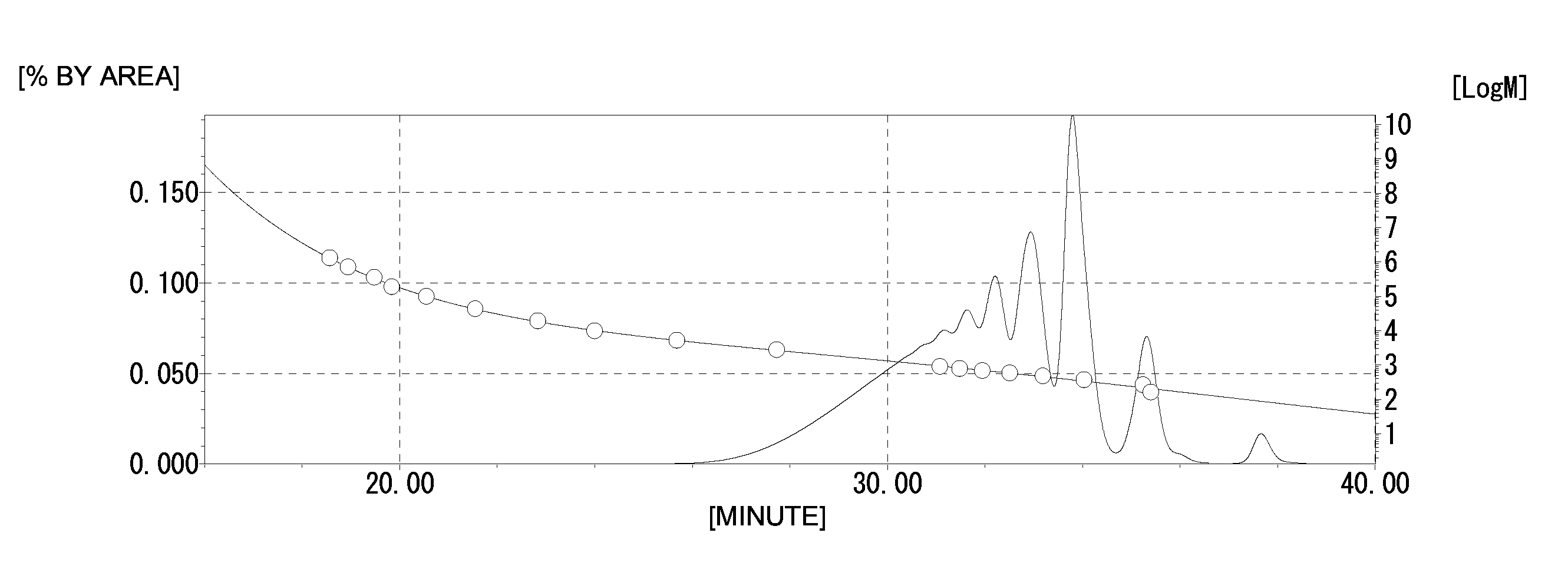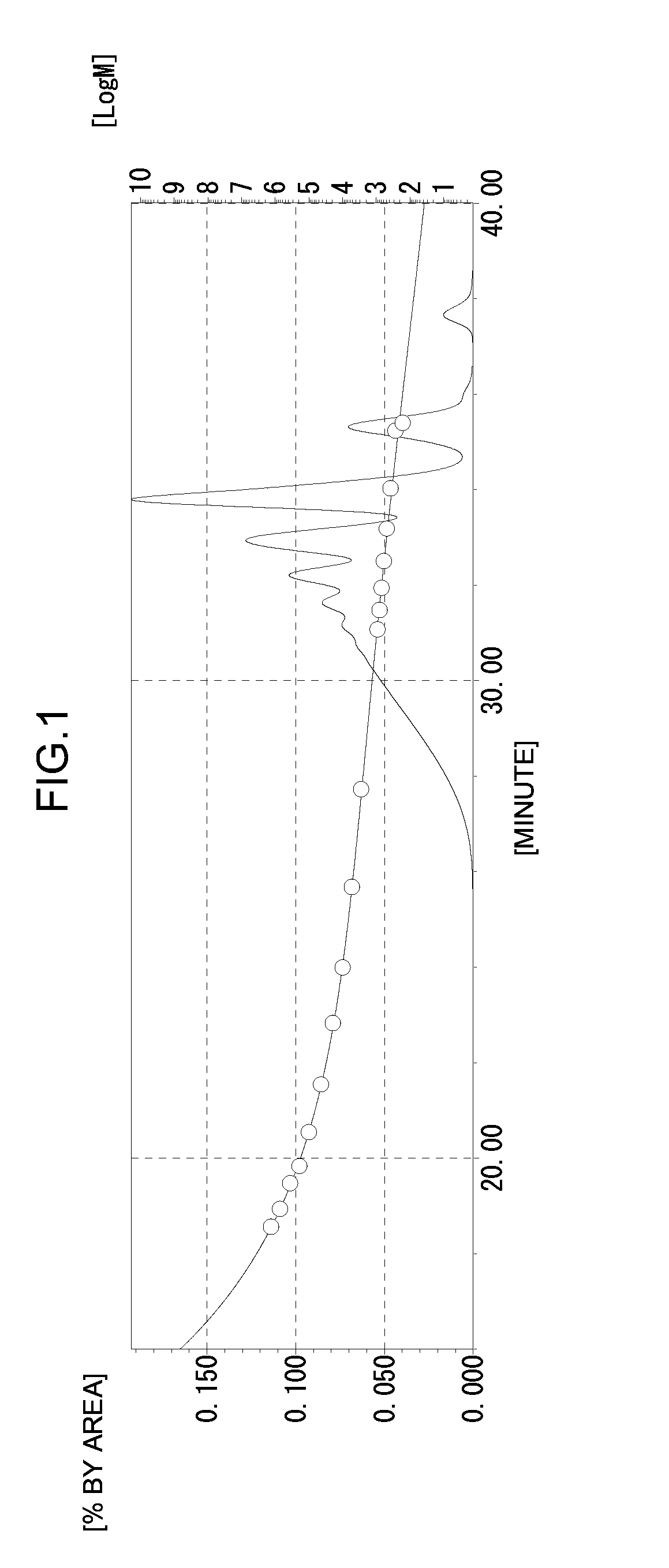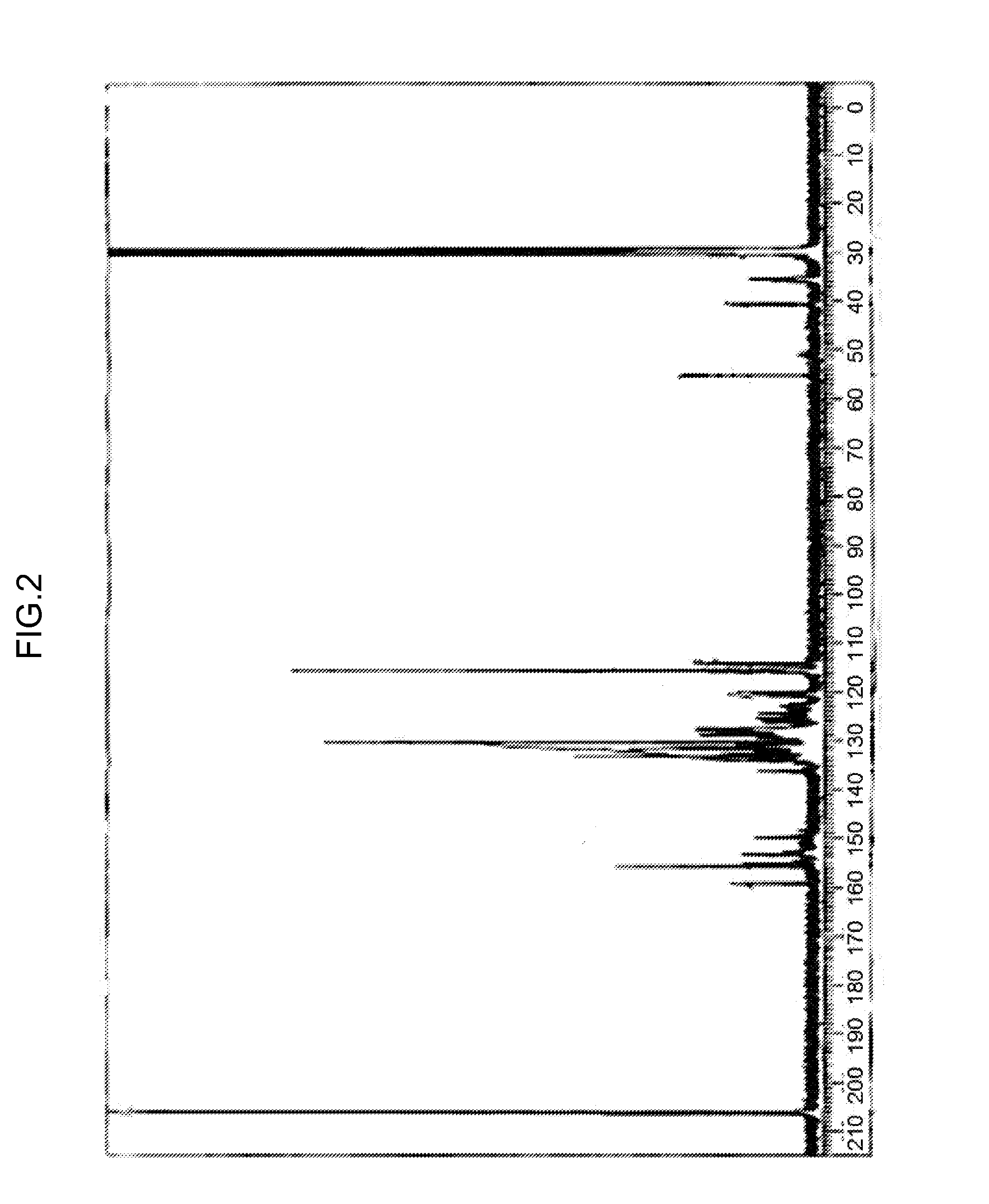Active ester resin, thermosetting resin composition, cured product of same, semiconductor encapsulation material, prepreg, circuit board, and build-up film
a technology of thermosetting resin and ester resin, which is applied in the direction of synthetic resin layered products, solid-state devices, electrical devices, etc., can solve the problems of difficult to obtain low loss tangent, crosslinking density, and insufficient heat resistance of cured products, and achieve low dielectric constant, and good heat resistance and flame retardancy
- Summary
- Abstract
- Description
- Claims
- Application Information
AI Technical Summary
Benefits of technology
Problems solved by technology
Method used
Image
Examples
production example 1
[0205]Into a flask equipped with a thermometer, a cooling tube, a distillation tube, and a stirrer, 124 g (0.59 mol) of 9,10-dihydro-9-oxa-10-phosphananthrene-10-oxide (hereinafter simply referred to as “HCA”), 78.7 g (0.59 mol) of p-anisaldehyde, and 161.2 g (1.55 mol) of a phenol novolac resin were charged and the resulting mixture was stirred at a temperature condition of 90° C. under nitrogen blowing. Then the temperature was increased to 140° C. and stirring was conducted for 4 hours. Then the temperature was increased to 160° C. and stirring was conducted for 4 hours. Then the temperature was increased to 180° C. and stirring was conducted for 2 hours. Then water was removed by heating and reducing pressure. As a result, 350 g of a phenolic resin (A1-1) having, as repeating units, a structural unit A and a structural unit B described below was obtained:
[0206]
[0207]The hydroxyl equivalent of the phenolic resin (A1-1) was 228 g / eq., the softening point was 148° C., and the melt ...
production example 2
[0208]A phenolic resin (A1-2) (490 g) was obtained by the same method as in Production Example 1 except that 161.2 g (1.55 mol) of the phenol novolac resin was changed to 248 g (1.55 mol) of 2,7-dihydroxynaphthalene. The hydroxyl equivalent of the phenolic resin (A1-2) was 250 g / eq., the softening point was 140° C., and the melt viscosity at 180° C. was 300 dPa·s. The GPC chart of the phenolic resin (A1-2) obtained is shown in FIG. 4.
production example 3
[0209]A phenolic resin (A1-3) (340 g) was obtained by the same method as in Production Example 1 except that 161.2 g (1.55 mol) of the phenol novolac resin was changed to 259 g (1.55 mol) of a phenyl aralkyl resin. The hydroxyl equivalent of the phenolic resin (A1-3) was 232 g / eq., the softening point was 102° C., and the melt viscosity at 180° C. was 1.0 dPa·s. The GPC chart of the phenolic resin (A1-3) obtained is shown in FIG. 5.
Comparative Production Example 1
[0210]Into a flask equipped with a thermometer, a cooling tube, a distillation tube, a nitrogen gas inlet tube, and a stirrer, 216 g (1.0 mol) of HCA and 71 g (1.0 mol) of a 42% by mass formalin aqueous solution were charged. The temperature was increased to 100° C. and the reaction was conducted for 4 hours. Solid precipitates produced thereby were filtered out and washed with acetone. As a result, 245 g of 2-(6-oxide-6H-dibenzoxa-phosphorin-6-yl)methanol (hereinafter abbreviated as “ODOPM”) was obtained. The melting point...
PUM
| Property | Measurement | Unit |
|---|---|---|
| temperature | aaaaa | aaaaa |
| heat resistance reliability | aaaaa | aaaaa |
| melt viscosity | aaaaa | aaaaa |
Abstract
Description
Claims
Application Information
 Login to View More
Login to View More - R&D
- Intellectual Property
- Life Sciences
- Materials
- Tech Scout
- Unparalleled Data Quality
- Higher Quality Content
- 60% Fewer Hallucinations
Browse by: Latest US Patents, China's latest patents, Technical Efficacy Thesaurus, Application Domain, Technology Topic, Popular Technical Reports.
© 2025 PatSnap. All rights reserved.Legal|Privacy policy|Modern Slavery Act Transparency Statement|Sitemap|About US| Contact US: help@patsnap.com



